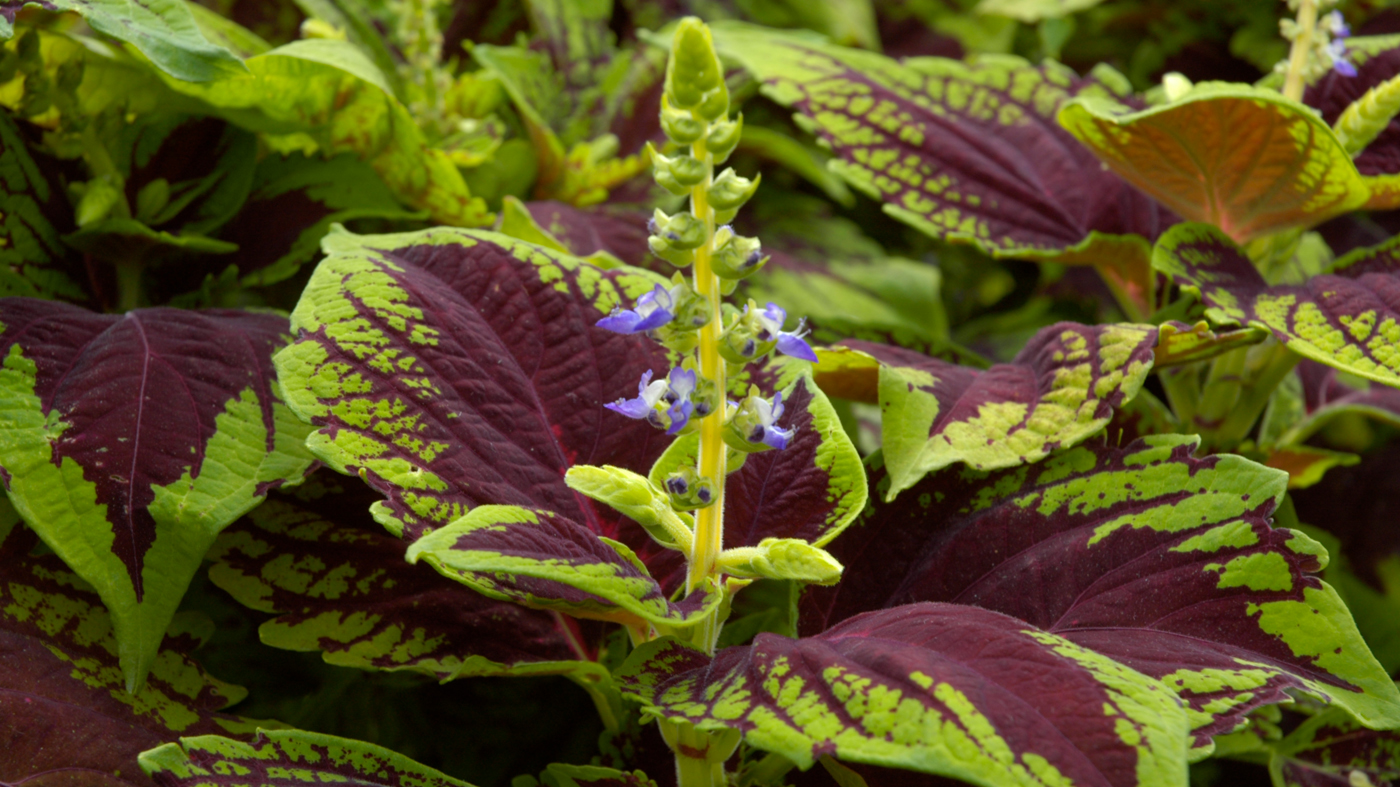

Plant Profiles
Coleus
Solenostemon scutellarioides
Known to most shade gardeners as coleus, Solenostemon scutellarioides brings tropical colors and waves of texture to garden beds and baskets. Grown for its vibrant flashes of foliage, which span the color spectrum from yellow and chartreuse to burgundy and purple, coleus is enjoying a revival from its earlier years as a popular Victorian houseplant.

The reasons for the current rage center on the plant's adaptability and growers' creativity. Once confined to shaded gardens, there are now varieties of coleus that are quite sun and heat tolerant. Newer, sun-loving strains were selected from plants growing in Indonesia and have been tested in Florida, Texas, and Georgia for their resistance to heat wilt and sun scorch. When supplied with adequate moisture and planted in very well-draining soil, these plants survived southern summers with no major problems. This is good news for Chicago-area gardeners who lack shaded yards.
Growers have been busily hybridizing coleus
Over 200 different cultivars are now available. Solid colors have given way to unlikely combinations of poison green with tomato red or mustard yellow with passion pink! Perhaps because of this outrageous mix of colors, coleus serves an important role in the garden. It can enliven a boring bed of hosta or add a touch of spice to plain petunias. Some designers look to coleus to be a "bridge" plant, capable of pulling otherwise incompatible plants together. But not all coleus varieties are flamboyant. There are dark plants in shades of deep purple that border on black, or velvety soft maroon plants that make perfect companions to everything pastel. Coleus can accent the plain or the fancy, and it is widely used in creative containers, where it serves to blend vegetables with vines as well as with flowering plants.
Coleus is grown primarily for the impact of its foliage.
Although the mounding plants will produce spikes of late-season flowers, most gardeners pinch them off to redirect the plant’s energy back to the leaves. Leaf shape is quite varied and can be toothed, lobed, or ruffled as well as plain and pointed. Even the texture of the leaves can be a surprise. Only some are smooth; some are puckered or quilted, inviting a touch. Most coleus performs best in shaded or semi-shaded gardens; the sun-loving varieties should be marked as such. Even moisture and excellent drainage are the plant’s only requirements. Rarely bothered by disease, young plants might suffer from slug damage when planted in deep shade. As with many extensively hybridized plants, coleus is best, and most easily, propagated by leaf cuttings instead of seed.
Can you really resist plants named 'Mr. Wonderful', 'Mama Mia', 'Inky Fingers', or 'Religious Radish'? I know I can't.

